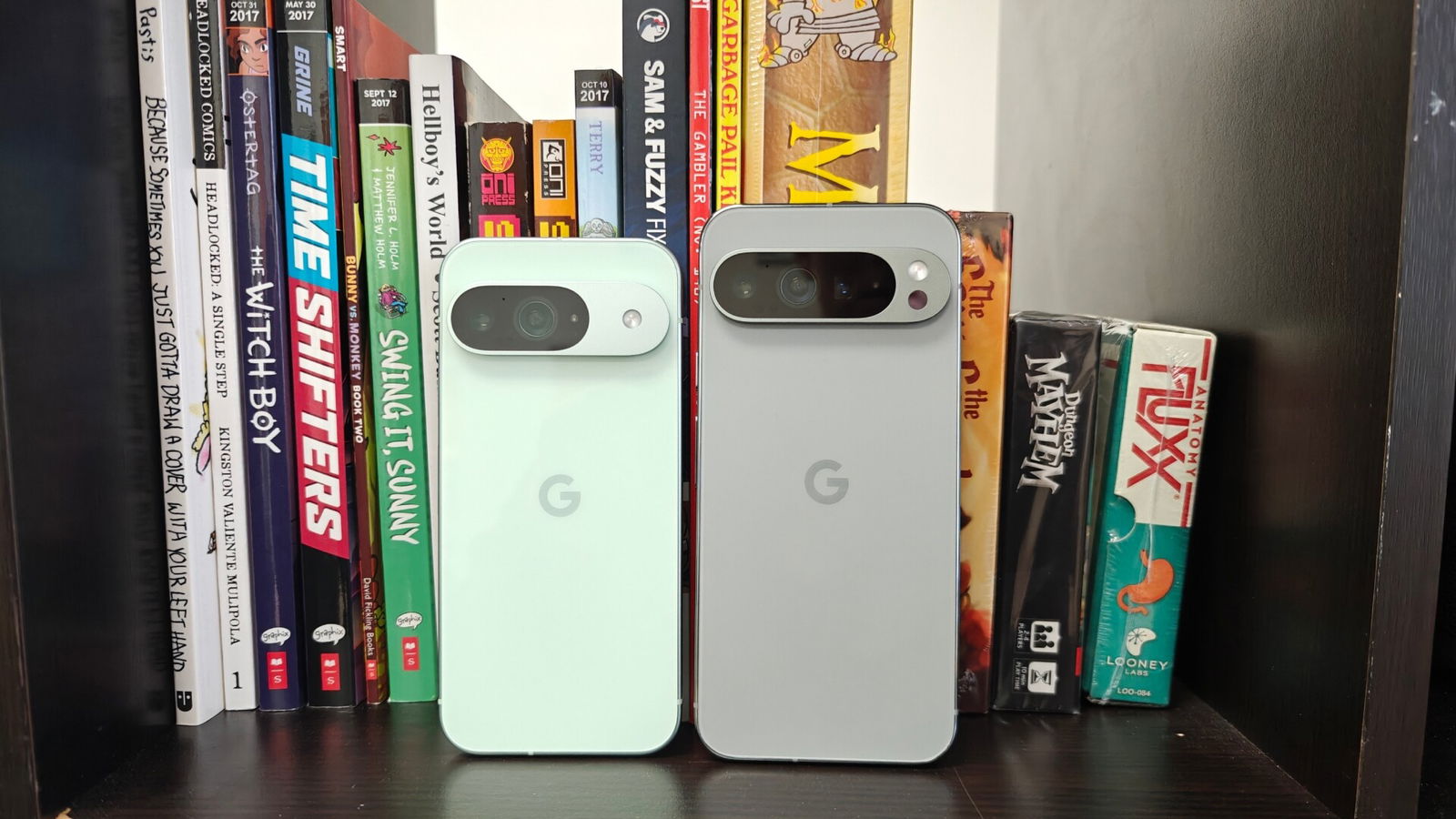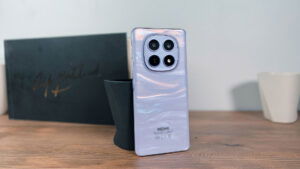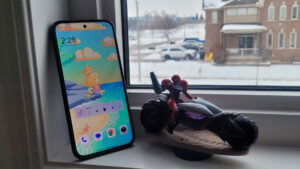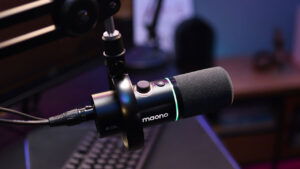It’s back-to-school time, and we all know what that means: getting the kids (or yourself) back into the rhythm of early mornings, homework, and a new Pixel phone release. With a brand new lineup featuring the Pixel 9, the Pixel 9 Pro, the Pixel 9 Pro XL, and the Pixel 9 Pro Fold, there is a lot to be excited about from Google. With so many options available, Google was kind enough to send one over for me to try out—so let’s dive in.
Physical Design
Unboxing the Pixel 9 is the first step in any product review, and the experience is similar to unboxing any other smartphone. Inside the box, you’ll find the essentials: the phone itself, a 3-foot charging cable, a quick start guide, and a USB-A to USB-C adapter. There’s not much else included, which is typical for modern smartphones as manufacturers focus on reducing packaging and minimizing accessories to encourage the use of existing chargers and cables.
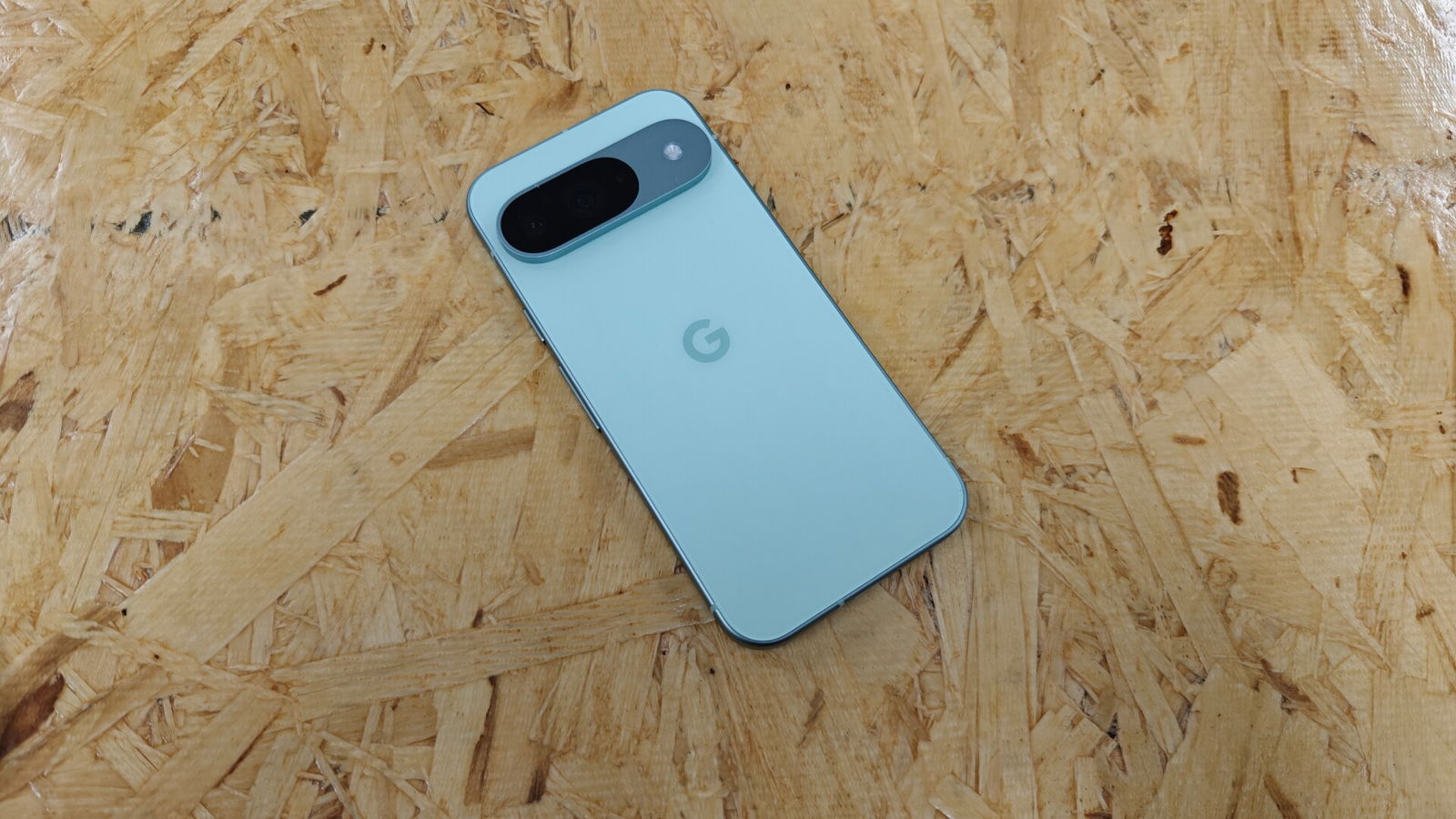
Despite the simplicity of the packaging, the phone itself is quite remarkable to behold. From the moment you lift it out of the box, the Pixel 9’s design and build quality stand out. The device has a luxurious feel, with a modern finish that immediately catches the eye. The minimalist unboxing experience puts the focus squarely on the phone, allowing its design and craftsmanship to take center stage—a deliberate choice that I’m sure Google put a lot of thought into.
The Pixel 9 is available in four different colours: Obsidian, Porcelain, Peony, and Wintergreen. I received the Wintergreen colourway, and I have to say it’s growing on me. I’m not usually a fan of mint and similar shades, but this version is very muted and could easily be mistaken for white (which I initially did when I saw pictures of the device before receiving it).
In terms of physical size, the Pixel 9 is slightly larger than its predecessors, the Pixel 8 and 8a, boasting a robust 6.3” Actua display compared to the 6.2” and 6.1” displays of the Pixel 8 and 8a, respectively. The display itself is a 1080×2424 OLED with 422 PPI and a 20:9 aspect ratio. The most noticeable difference is the physical footprint of the device. The Pixel 9 features squared-off edges all the way around, a stark contrast to the rounded edges of previous models.
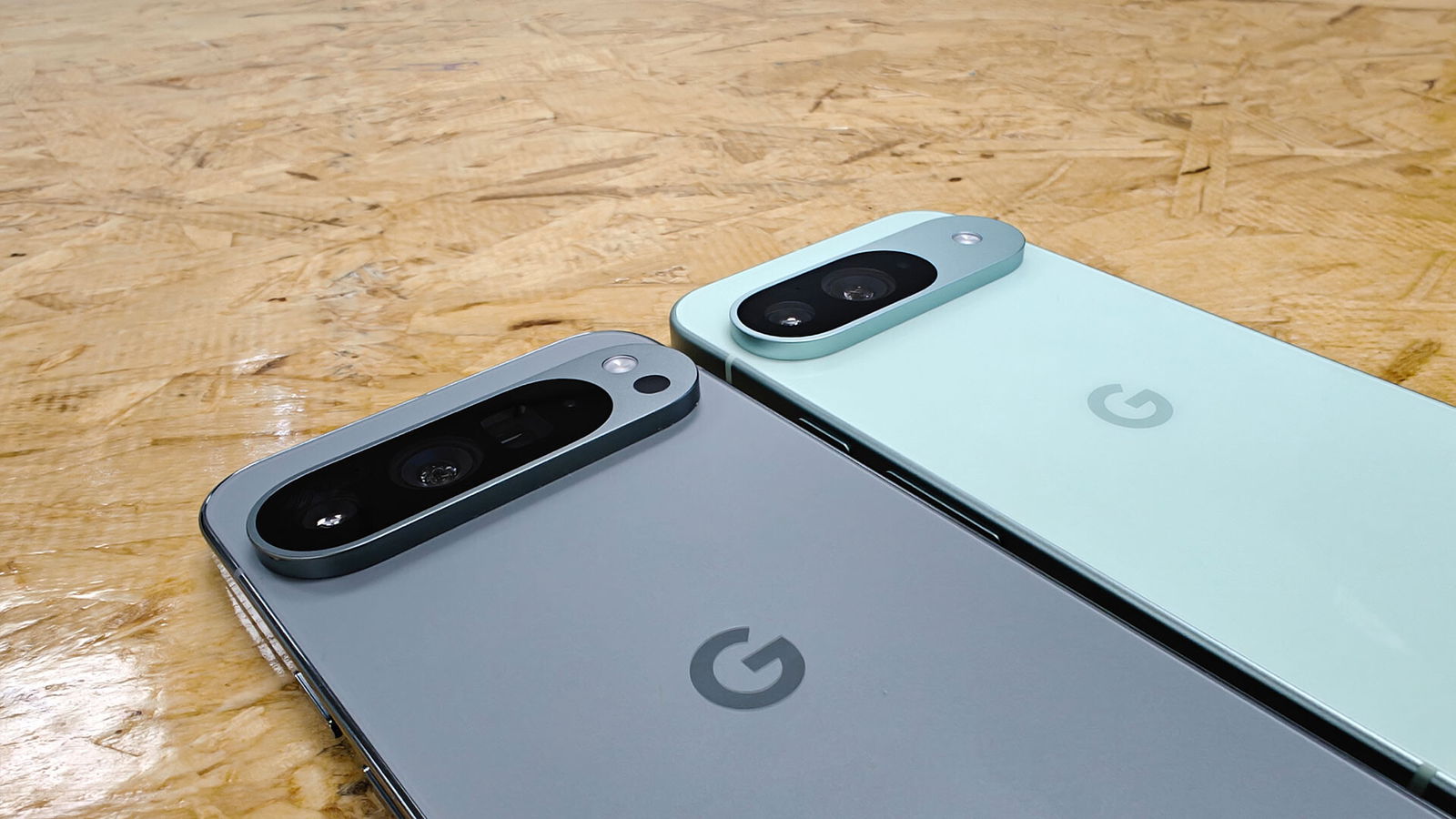
In terms of specs, the Pixel 9 I tested featured 128 GB of storage and 12 GB of RAM, providing ample space for apps, photos, and files, along with smooth multitasking capabilities. It also comes equipped with a Mali-G715 MC7 GPU, which handles graphics-intensive tasks with ease, and Google’s custom Tensor G4 SoC, the powerhouse behind the phone’s performance.
While the hardware is slightly less powerful compared to the Pixel 9 Pro XL, it still holds its own against many flagship smartphones on the market, even in 2024. This combination of storage, RAM, and processing power ensures that the Pixel 9 can handle most tasks thrown its way, from everyday browsing and social media to more demanding applications like gaming and video editing.
“In my day-to-day usage, I found that the Pixel 9 performed exceptionally well when switching between apps and opening new apps.”
The Pixel 9 is also noticeably heavier than what I’m used to, weighing in at around 198 grams—about 11 grams more than the Pixel 8. While this added weight may be noticeable at first, it’s not necessarily a drawback. In fact, it contributes to the phone’s overall solid feel, giving it a sense of durability and sturdiness that’s reassuring in daily use. The extra heft makes the Pixel 9 feel like a device built to withstand the rigours of everyday life, whether it’s being tossed into a bag or enduring the occasional accidental drop.
Performance & Battery
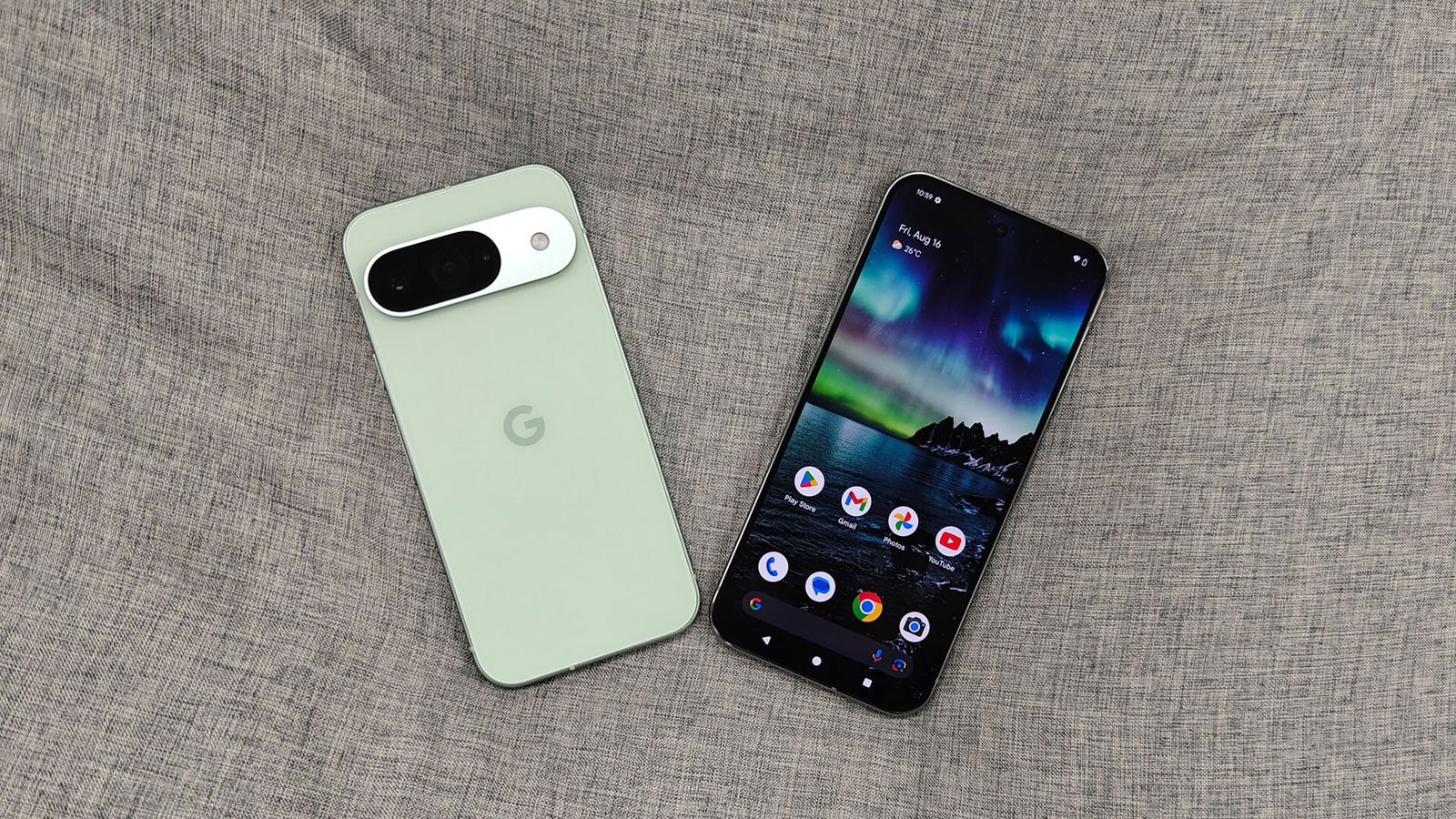
As we all know, smartphone battery life can be a deal-breaker, especially if the device can’t last a whole day on a single charge. Fortunately, the Pixel 9 exceeds expectations, offering around 31-35 hours of moderate usage and up to 100 hours on Extreme Battery Saver mode. Charging the battery is quick and easy as well—using a 45W USB-C Google Charger, the Pixel 9 can recover around 55% of its battery in just 30 minutes.
In my day-to-day usage, I found that the Pixel 9 performed exceptionally well when switching between apps and opening new ones. At one point during my testing, I had 11 apps open simultaneously, including resource-heavy apps like Slack, Pokémon Go, Discord, Reddit, and TikTok. Despite this, there was no noticeable slowdown, stuttering, or lag, which speaks volumes about the device’s ability to handle multitasking efficiently. The Pixel 9 maintained a smooth and responsive experience, making it a reliable choice for users who frequently switch between various apps throughout the day.
This level of performance is made possible by the Google Tensor G4 chip, the same one found in the Pixel 9 Pro and Pixel 9 Pro XL. However, gaming performance saw a slight drop, particularly in demanding games like Genshin Impact. While the graphics remained smooth, the actual gameplay lagged and was not enjoyable. We found that Genshin Impact seemed to run better on the Pixel 9 Pro XL, so if gaming is a priority, the Pixel 9 Pro XL may be the better choice for you.
Camera



The camera in the Pixel 8 was impressive, and the Pixel 9 continues that trend. It features an advanced dual rear camera system with a 50 MP wide-angle lens and a 48 MP ultra-wide lens with Macro Focus. The 50 MP wide-angle lens offers an 82-degree field of view and Super Res Zoom up to 8x, while the 48 MP ultra-wide lens provides a 123-degree field of view. Not to be outdone, the front camera is a 10.5 MP Dual PD selfie camera with a 95-degree field of view.
These are all improvements over the Pixel 8, which is to be expected, but it’s still nice to see Google strive to make things better with each iteration of the Pixel lineup.
“On the whole, the Google Pixel 9 is as close to a perfect smartphone as I have ever used.”
The Pixel 9’s real power lies in its camera and editing features, which are designed to elevate the photography experience to new heights. One of the standout features is the Add Me function, where AI can seamlessly add a person—typically the one taking the photo—into the picture based on similar images taken. This is particularly useful for group photos where the photographer is usually left out, including everyone without needing a timed photo or a tripod. The Pixel 9 also excels in low-light photography with its enhanced Night Sight mode, which captures stunningly clear and vibrant images even in challenging lighting conditions.

Other features like the Auto Frame in Magic Editor allow you to use the Pixel 9’s built-in AI to expand on your pictures based on what is in the picture. Auto Frame can be used on new and old pictures alike, and you only have to use the AI button when editing the picture on the phone, and the option to use Auto Frame will come up.
What I like most about the Pixel 9’s camera is its low-light capability, which is a significant improvement over the Pixel 8. I took numerous photos after sunset near my home, using both Night Sight and regular picture mode, and the quality is spectacular. There was no graininess, which can sometimes occur in low-light environments, and the quality of close-ups and landscape shots was some of the best I have ever captured—bar none.
Software
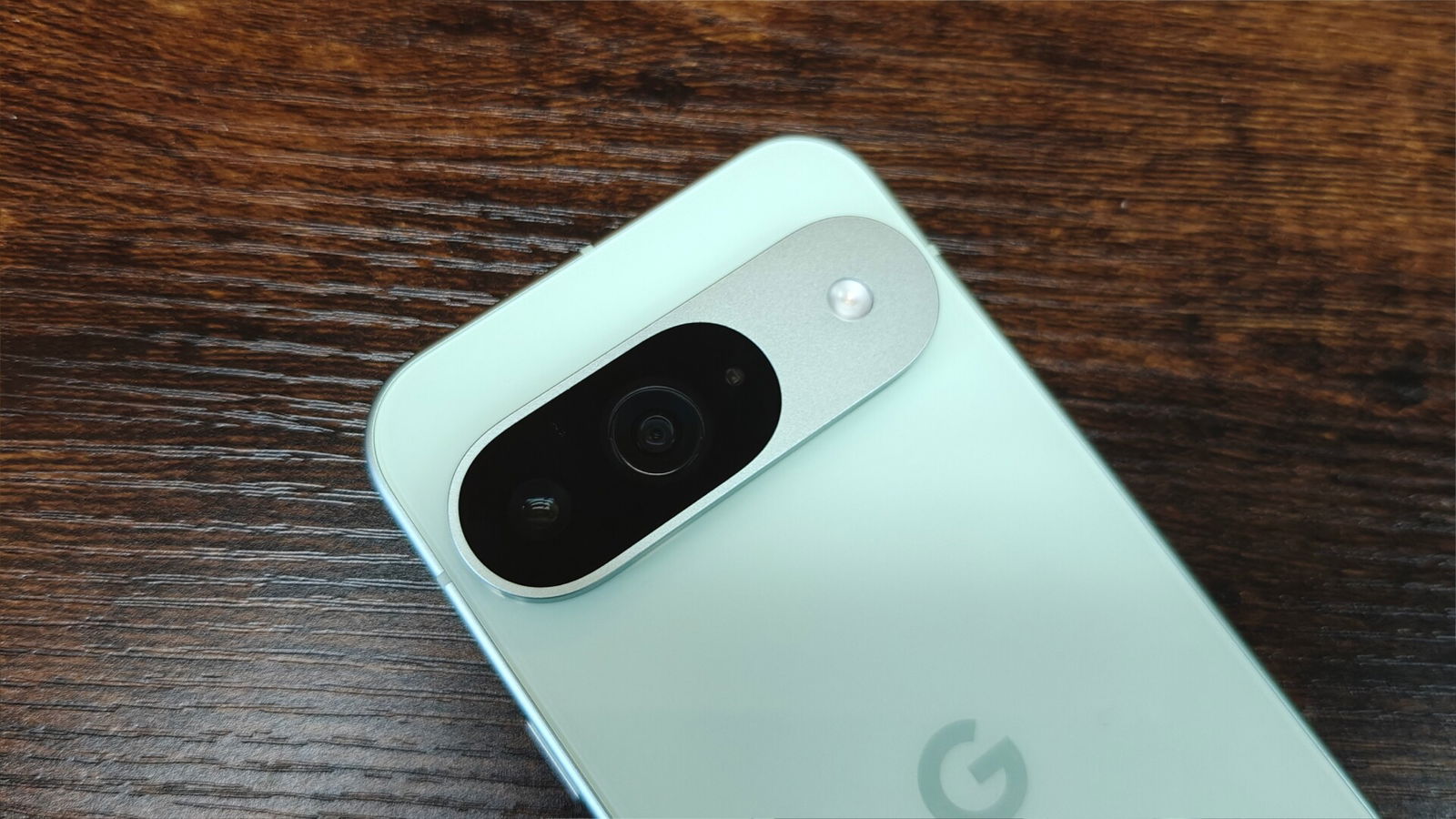
A phone is only as good as the software that powers it, and the Pixel 9 runs on the latest version of Android 14. Like its predecessor, it comes with Google’s 7 Years of Software Support pledge. This means that Google will provide software updates for the device for seven years after its release, ensuring longevity and offering consumers reassurance that their phone won’t be abandoned when a new version is launched.
One of my favourite features of the Pixel 9 is the Add Me feature, despite encountering a few minor AI-related hiccups, such as pieces of the background poking through arms or bodies. While this was frustrating at first, I was always able to retake the photo and achieve a better result. I used the Add Me feature to take a few pictures with my family, but for privacy reasons, we’ve chosen to use a different image to showcase it here.
Google has made a big push on the AI front with the Pixel 9, primarily through Gemini, its on-board AI. Gemini can be used for a wide range of applications, from drafting a tough email to finding the perfect way to season a steak. In practice, I found that Gemini is quite good at relaying the information I’m looking for. As with all AI, it’s best to be as specific as possible, but I intentionally gave vague prompts at times just to see the responses. I was thoroughly impressed with how well Gemini integrates into daily life, simply by using the “Hey Google” voice prompt.

There wasn’t a single aspect of the Google Pixel 9 that didn’t impress me. Surprisingly, I even liked the squared-off edges, despite the rounded edges being a Pixel staple. From the camera quality to the battery life to the AI integrations, the Pixel 9 offers something for everyone. It certainly feels like a jack-of-all-trades, but with the high quality you’d expect from a Google device. If you want to be on the cutting edge of smartphone AI, the Pixel 9 lineup with Gemini is where you want to be.
On the whole, the Google Pixel 9 is as close to a perfect smartphone as I have ever used. Its UI, software, AI features, and more all work together to create an exceptionally pleasant user experience. While there may be some growing pains as AI continues to evolve, you’d be hard-pressed to find a better everyday smartphone.
